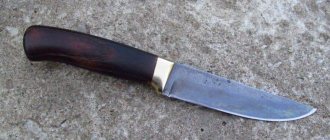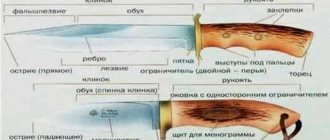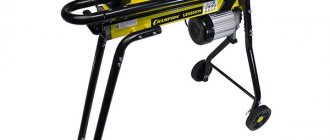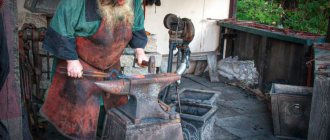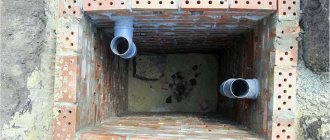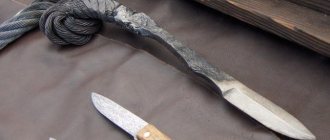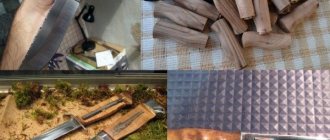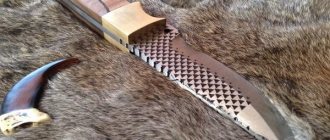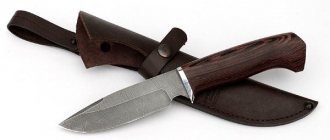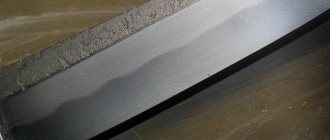Experts in the knife craft manage to make blades out of anything. There was a piece of iron lying around in the barn - a couple of days of work, the blade was ready. Not being surprised by such people is simply nonsense. Invariably, individual products turn out to be works of art. And the knife made from springs looks unique in its own way. Let us sanctify the theme of the painstaking work of the master.
Homemade knife made from springs.
History of the knife
As an independent type of agricultural tool, the machete first began to be used when harvesting sugar cane. With its help, the jungle was cleared for new plantations. The heavy, wide blade easily cut through thickets of bushes and helped pave the road. The length of the blade from 35 to 60 cm and a thickness of 3-4 mm turned it into a formidable weapon, which was subsequently used by rebels and armed forces of different countries.
Such weapons were used not only in South American countries. In Nepal, Gurkha warriors have used the kukri, an analogue of a machete knife, since the 15th century. Depending on its purpose, it has several varieties:
- Badhum is a combat knife with a very thick blade – 0.8 cm.
- Hanshi is an agricultural tool that replaces the Gurkha sickle.
- British army service - military weapons used in the arsenal of the British army.
The modern machete knife has significantly expanded its functionality in comparison with the prototype. The blades of some models additionally have a saw. Knives made for tourism have hollow handles in which you can store survival kit: fishing line, fishing hooks, flint. For arming US special forces, a folding machete knife is produced for safe landing.
Features of a knife made from a spring
The alloy is actively used by professional knife makers and makes it possible to obtain a blade with unique properties. The highest strength plus the ductility and wear resistance of the material allows craftsmen to produce blades worthy of attention.
Spring steel is an inexpensive option for carbon steel. The chemical composition gives it elasticity and toughness. Quenching the alloy gives a hardness of 60-62 Rockwell units. Modern craftsmen undertake to make products from 65G steel, considering it the most suitable.
Properties of spring steel
There are many opinions about the springs of cars originally from the USSR. Supposedly they are a really good material for a blade. It is useless to argue; it is easier to find out what grade of steel the product is made of. Experienced metallurgists claim that spring steel includes many grades:
- springs for railway cars and springs for cars are made from: 50HG and 50HGA, 50HGFA;
- mechanical engineering, tractor manufacturing uses 55С2;
- heavy-duty spring mechanisms and springs are made from 55S2GF;
- parts least susceptible to shock loads use 65G.
The list is quite long and there is no point in covering it all. But it is worth noting the approximate similarity of these steel grades both in chemical composition and physical properties.
The main guideline for creating such products is the ability to restore their original shape after various loads, i.e. - spring back. The slightest destruction during operation of the product is unacceptable. In accordance with GOST, excessive requirements are imposed on such alloys.
The use of spring steel for making a knife
Spring material 65G is used by amateur knife makers to make knives. Thanks to its unique characteristics, the metal finds its application in various fields.
Blades for the kitchen, hunting, tourism - all show excellent cutting qualities. If there is a special need, you can actually forge a sword or an ax. After hardening, the steel acquires good rigidity, which allows the product to be cut. Examples of using spring steel:
- Kitchen knife. In difficult times for the country, after the collapse of the USSR, not all people could afford a good set of kitchen knives. I had to get out. Springs and plates made of 65G steel were easily accessible. In the kitchens of the post-Soviet space, homemade products were often found. The handle was made from improvised material: wood, simple epoxy, and electrical tape - which did not prevent the knives from remaining at their height.
- Tourist knife. The disadvantage of spring metal is that it is susceptible to corrosion and requires constant care after use. The knife is suitable for use in hiking conditions. An important point is hardening. If it is weak, the blade will quickly become dull on the tin can. You should know the hardness of the knife.
- Army. Tactical or, nowadays, military knives do their job well. Serrated sharpening will increase the scope of use of the blade. Withstands piercing blows without problems. In everyday conditions it will become a valuable assistant for a fighter or a “survivalist”.
- Axe, machete or sword. Alloy 65G and analogs allow you to make truly formidable weapons. The thickness of the product certainly plays a significant role. When producing such a masterpiece, you need to stock up on springs from a truck, or get a long plate.
With proper processing of the metal, we are guaranteed to get an excellent blade. Little experience with the manufacture of steel products, nonsense. Further, in the article we will provide a detailed description of the manufacture of knives from springs using various methods.
How to make a knife from a spring using forging
Working with metal is a delicate matter. Forging a product requires certain skills. There is nothing wrong with ruining one piece. The experience gained will be useful the next time you try. We will work with a spring, approximately steel grade 65G; the color of the workpiece when heated will help determine the exact alloy.
Professionals consider the forging method to be more practical. When a metal is repeatedly heated and cooled, processes occur at the molecular level. Compaction of the metal and changes in structure will affect the quality of the product.
Tools and materials
Work should be carried out outdoors or in a spacious garage with an exhaust hood. It’s worth taking care of your health, finding a mask and heat-resistant gloves. The forging kit looks like this:
- steel blank from a spring;
- forge or oven;
- large hammer 4-5 kg, small hammer 1-1.5 kg;
- anvil, forceps;
- grinding machine;
- welding machine, angle grinder.
A simple fire with air supply is quite suitable as a heating element. Throw in coal and there will be no heating difficulties. All spring products are hardened at the plant. The steel must be annealed. The process is carried out by gradually heating the workpiece to a temperature of 800-900 ° C and leaving it to cool in air. The part is ready for use:
- After annealing, the metal becomes more pliable to any manipulation. It’s easier to weld the rod; for convenience in further work, you won’t need tongs.
- If the workpiece has a curved shape, it is worth heating it red-hot and straightening it with a small hammer. Be sure to monitor the temperature. Do not work with cold metal.
- The forging temperature is 1000-1100 °C, without having a thermometer, you should determine it by eye (dark yellow) or with a magnet - the workpiece will stop sticking to it. The color and thermometer indicate that the steel is actually grade 65G.
- We hammer the product with a large hammer and stretch it to length. Springs generally have a thickness of 5-6 mm; stretching should be continued until a thickness of 3-4 mm.
- It is better to forge the slopes and the nose to the tip of the blade right away, in the future there will be less hassle on the grinding machine.
What is design like?
Machete knives come in many varieties. Before you make such a tool yourself, you need to decide for what tasks it will be used. If the goal is to create a universal tool, then you can make a machete knife with a wide, massive blade that is convenient to use with both an ax and a sapper shovel.
The classic version did not have any protection for the hand. Because it was only used for cutting down bushes. Military varieties have already received a guard so that the palm is protected during a strike. When making a homemade knife, you can make a small hand rest. This will provide the necessary protection, but will not allow the knife to be classified as a bladed weapon.
Peculiarities
Due to its properties, 65g steel is not suitable for welding. But it is worth noting that the range of uses is quite wide, even if you do not take into account edged weapons. Various springs, springs, bearing housings, components and metal structures are made from it. It has found application even in trucks - this particular material is used to create rear axle springs.
In order for the material to retain its properties and not become rusty, it must be kept in a dry room, and the products must be periodically coated with oil.
Due to its low cost and fairly decent properties, 65g steel is used as analogues of such materials as: 55С2, 60С2, 70, 70Г, У8А, 9Хс.
The elasticity of the metal during forging allows you to make edged weapons and blades at home. It is for this reason that 65g steel has become widespread in this industry. This applies to manual production not only of sports equipment or tools for reconstruction, but also for domestic use - in the kitchen.
Do-it-yourself machete knife: what to make it from?
If a person decides to make a machete himself, then he probably does not want to invest a lot of money in production. Therefore, you can choose used parts or tools as a material:
- Band saw blade. It uses high carbon steel. It is used on sawmills for longitudinal cutting of wood. In addition, there are band saws for cutting metal blanks. The material used in them is much stronger. When making a machete knife, it may be difficult to process this material.
- Car springs. They have different sizes both in width and thickness. Therefore, you can choose any option to suit your model. This is a solid, high-quality material that has one drawback - bending. To eliminate it, you will have to work hard. You can level the spring using a press or using thermal heating. The second option is more preferable, since in this case additional hardening can be done.
- Circular saw blades. They fit perfectly, except for one drawback - it is difficult to find a disk of the required diameter. As a way out of this situation, you can make the handle separately from the body of the blade.
A homemade machete knife will cost much less than a factory knife, but will not be inferior in quality. Made according to an individual project, it can be much more convenient.
Properties of spring steel
There are many opinions about the springs of cars originally from the USSR. Supposedly they are a really good material for a blade. It is useless to argue; it is easier to find out what grade of steel the product is made of.
Blade blank made of spring steel.
Experienced metallurgists claim that spring steel includes many grades:
- springs for railway cars and springs for cars are made from: 50HG and 50HGA, 50HGFA;
- mechanical engineering, tractor manufacturing uses 55С2;
- heavy-duty spring mechanisms and springs are made from 55S2GF;
- parts least susceptible to shock loads use 65G.
The list is quite long and there is no point in covering it all. But it is worth noting the approximate similarity of these steel grades both in chemical composition and physical properties.
The main guideline for creating such products is the ability to restore their original shape after various loads, i.e. - spring back. The slightest destruction during operation of the product is unacceptable.
In accordance with GOST, excessive requirements are imposed on such alloys.
Making a blank
After you have decided on the model and selected the material, you need to make a pattern from thick cardboard. It is better to experiment on paper rather than on a blank. After the final edits, the workpiece is outlined on the metal. You need to take a small reserve, leaving allowance for processing.
Read also: Assembling a cultivator for a walk-behind tractor
You can cut the workpiece in 3 ways. Each of them has advantages and disadvantages:
- Laser cutting. High precision method. It is used in enterprises for the manufacture of new parts. This method is good because further processing after it is minimal. It is also suitable for cutting neat holes in solid materials, which is much more difficult to do with a drill. The disadvantage of this method is that it is not available to everyone. In addition, the laser overheats when cutting metal, so the cutting edge may not hold its edge well.
- Waterjet cutting. This is a method of cutting with a jet of water with the addition of abrasive particles. This method is ideal except that it is difficult to access.
- Cutting using a sander. This is the most affordable and time-consuming option. To work with an angle grinder, you need to stock up on used circles that have the smallest diameter. This is necessary in order to make curved cuts. It is dangerous to work with circles of large diameters. Moreover, the cuts will be sloppy. You need to leave a large margin for processing.
Handle
Individual production is good because you can adjust the handle to your hand. It needs to be made a little larger than the width of the palm, and a stop should also be provided. Several holes need to be drilled at the bottom. One is for attaching the lanyard, the rest are for rivets that will secure the handle lining.
You can use different materials for the overlays, depending on your imagination: wood, plastic for shoe heels, textolite. It is better to use hardwood: oak, beech. A wooden handle can be treated with wax or hot linseed oil. In this case, the oil polymerizes in the wooden pores and will reliably protect the handle from water. In addition, such processing will reveal the texture of the wood and give it an aesthetic appearance.
Blade sharpening
Since the blade thickness is 3 mm, it is difficult to sharpen immediately. First you need to make gentle slopes that will give the lower cutting part of the blade a wedge shape. For this work, you can use a grinder with a petal attachment. The rotation speed of the grinding machine is very high. It can easily overheat the workpiece and thereby overheat it. To prevent this from happening, you need to work with minimal pressure, without holding the petal circle in one place.
After giving the wedge shape, the blade is further sharpened on an emery machine. In order for sharpening to be accurate, the abrasive wheel should not have runout. The blade is sharpened at low speed with constant cooling with water. The handle of the machete must be made after giving the workpiece slopes, but before sharpening.
Knife case
To protect yourself and others, the machete knife must be in a sheath. To make it, a piece of thick leather or plastic and fabric is suitable. You will also need strong threads or rivets. To make a cover, you need to wrap a piece of leather around the blade. Then outline it with a large margin. This reserve is needed so that rivets can be installed later. After this, the skin is trimmed along the contour.
Before connecting the edges of the workpiece, you should make slits for wearing the case on the belt. You can sew leather loops instead of slits. After the loops are made, the workpiece is folded in half and secured with rivets.
Final revision
Sometimes you can't make a tool that's completely satisfying the first time. The problem may be in the sharpening or shape of the handle. After working for some time, the owner may feel the weight of the knife as a drawback. Then you will have to eliminate the shortcomings by modifying the design. For example, a cleaver weighing 1.5 kg can quickly cause fatigue when working, then you will need to cut off the excess part of the blade, making the tool lighter.
If cutting wood is ineffective, you can resharpen the bevels, thereby reducing the sharpening angle. This will allow the blade to penetrate the hard material better. If you don’t like the wooden or plastic handle, you can remove the pads and wrap the handle with cord. Such a handle will definitely not slip in your hand. Thus, you can bring the machete to perfection.
The use of spring steel for making a knife
Spring material 65G is used by amateur knife makers to make knives. Thanks to its unique characteristics, the metal finds its application in various fields.
Blades for the kitchen, hunting, tourism - all show excellent cutting qualities. If there is a special need, you can actually forge a sword or an ax. After hardening, the steel acquires good rigidity, which allows the product to be cut.
Examples of using spring steel:
- Kitchen knife. In difficult times for the country, after the collapse of the USSR, not all people could afford a good set of kitchen knives. I had to get out. Springs and plates made of 65G steel were easily accessible. In the kitchens of the post-Soviet space, homemade products were often found. The handle was made from improvised material: wood, simple epoxy, and electrical tape - which did not prevent the knives from remaining at their height.
- Tourist knife. The disadvantage of spring metal is that it is susceptible to corrosion and requires constant care after use. The knife is suitable for use in hiking conditions. An important point is hardening. If it is weak, the blade will quickly become dull on the tin can. You should know the hardness of the knife.
- Army. Tactical or, nowadays, military knives do their job well. Serrated sharpening will increase the scope of use of the blade. Withstands piercing blows without problems. In everyday conditions it will become a valuable assistant for a fighter or a “survivalist”.
- Axe, machete or sword. Alloy 65G and analogs allow you to make truly formidable weapons. The thickness of the product certainly plays a significant role. When producing such a masterpiece, you need to stock up on springs from a truck, or get a long plate.
With proper processing of the metal, we are guaranteed to get an excellent blade. Little experience with the manufacture of steel products is nonsense. Further, in the article we will provide a detailed description of the manufacture of knives from springs using various methods.
Reviews of machete knives
In Russia, a large knife like a machete has existed for a long time. It is called a cleaver. As a utility knife, it is used everywhere. Those who use this tool say that it is very convenient for some purposes. For example, a machete is better suited for cutting bushes than an ax or chainsaw. A long blade is more effective at cutting thin, flexible rods. In some cases, a machete can easily replace an ax when chopping wood. After all, its blade weighs from 700 to 1300 g. In addition to thin twigs, it can cut branches and small trees. For example, it can cut a solid birch with a diameter of 10 cm in 3 blows.
doka43 › Blog › Making a machete.
Made based on a video on YouTube (with Grigory Sokolov in the title role))
To begin with, I repeated its design. But I couldn’t find the saw blade from frame 63. But I considered it inappropriate to buy. In addition, according to reviews, from 63 used frames. saws are often set on fire and do not hold the blade. I also didn’t want to mess with heat treatment. I got a disk from a circular saw with a diameter of 710 mm, thickness 3 mm. I made an outline of the future machete from cardboard, based on my hand.
How to draw and the manufacturing process are described in detail in Gregory’s video. I wound the handle with a 6mm cord. I sharpened the blade with a grinder and a grinder... And immediately ran to cut down the bushes. Hmmm... And the handle is not very corded. If you fell a few trees, it wouldn't go anywhere. But I was planning more intensive work. Nadys took a plot of land, abundantly overgrown with bushes. There are hundreds of them there. The handle with the cord is thin and uncomfortable, even with rope pads. In general, I instantly softened my hand and earned 3 well-deserved calluses. The palm became red, like the claw of a boiled crayfish. I immediately remade the handle. 2 beech overlays.
As it turned out, the saw blade can be drilled (but the drill must be of high quality, not Chinese).
In addition, another drawback emerged - heavy weight. Gregory has a blade made of 2 mm linen. I have 3 mm with the same dimensions. I sanded the planes a little, but did not make the canvas thinner. My blades came out to 870 grams. With a new powerful handle - 1100 grams. You can't work with one hand for long. I looked on the Internet, many swords weighed from 1 kg to 1.5. Individual copies of two-handed 2.7. However! ! I decided to reduce the width and cut off the excess.
After lightening, the blade came out to be 715 grams, the handle 102 grams. Total weight 817 grams. Total length 565 mm. Handle 190mm.
I liked this weight. The force of the blow did not decrease. Work has become easier and more convenient. Impression. The strongest blows are in the area of the blade at a distance of 15 cm from the handle; it penetrates very powerfully into the wood and there is absolutely no recoil to the hand. Thin branches can be cut as desired. I immediately noticed that you shouldn’t cut at 90 degrees. At an angle it is much easier and deeper. For regular strikes, grip with your hand at the blade, for accented strikes at the base of the handle. For the truly brutal ones - with both hands. Green branches and living trees are best cut. The worst thing is dead wood. The two-handed handle is comfortable. Accented strikes can be delivered with both hands.
Handle made of two halves of beech. The shape is straight. The curved one doesn't roll in my opinion. This is not a saber for backhanded strikes. Tested by practice. A handle that is too wide is bad, as is a narrow one. The cross-section is oval. Fingers should not close. My section is 38x28 mm. But here you need to navigate by hand. The handle has several holes for attaching a lanyard. In my opinion, the lanyard interferes with the work. But it is convenient to carry. Well, or if there is a risk of permanently dropping the tool (river, mountains.) In general, everything on the handle should be smooth, and there should be no protruding parts - your hand will instantly become calloused during intensive work. I coated the handle with wax. I bought it to polish my car. Some kind of carnuba). I haven’t bothered with linseed oil yet. I'll try to bury the blade in Coca-Cola. Although this is not necessary. Doesn't seem to rust. Practice will show. I haven't decided what to make the scabbard out of. Grigory has a tire from a chainsaw. For now, I took strips of thick cardboard from the box and wrapped it with tape. You can transport it in a car or carry it in a bag. I did not sharpen the blade at the top. Straight section only. When you cut down trees near the ground, you often cut them down with one blow and the blade touches the ground (just with the blunt rounded part). However, I’ll sharpen it a little, like a shovel. It will be possible to dig and chop the roots.
General conclusion. The idea was a success. Thin branches, branches and trees 5-6 cm thick are cut down at a time. And it’s much more convenient to do this than with an ax. Factor of. A chainsaw is inconvenient for thin bushes. For thick trees, a chainsaw or bow saw is more convenient. The machete is very convenient for its niche - bushes, twigs, thin trees. In my opinion, you don’t need to weigh more than 800 grams - you can’t swing much. A thin blade (2-3mm), with sufficient mass and speed, powerfully cuts into wood. When struck at the handle, the blade enters 5 centimeters in one stroke. Perhaps the tool will be useful when chopping meat or cutting off the heads of chickens. I haven't tried it. After several days of work, there was not a single nick on the blade. Although I’m lying, a couple of small ones appeared.
